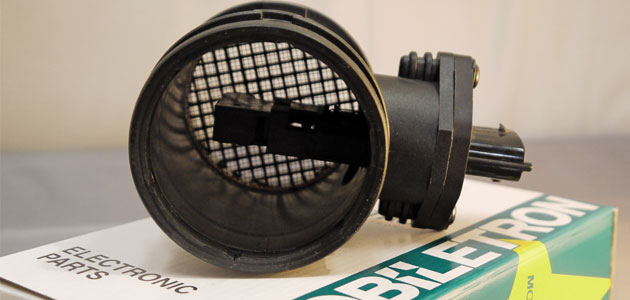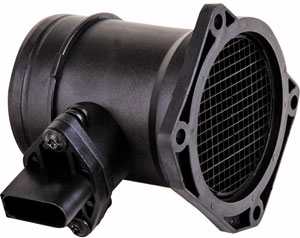
MAF sensors (otherwise known as Air Mass Meters) can produce driveability symptoms without generating an engine management warning light. The sensor directly measures how much air is passing into the engine. Knowing this data is important because the car’s ECU uses the information to give the correct amount of fuel to the engine.
A faulty MAF signal will cause the car’s ECU to give too much or too little fuel to the injectors. If the ECU detects that there is either an erratic signal, or none at all, it uses a default value to keep the engine running. The ECU takes the engine load and speed, modifies the value for some fuel and engine temperature readings and MAF values to determine fuel injection timing and metering.

Lack of power
A petrol car will run poorly with no MAF signal because they have to be within a narrower air/fuel ratio to run smoothly, compared to a diesel engine. A diesel car can run without the MAF, but performance will be poor and the engine will feel sluggish with a lack of power.
The most common symptoms you’ll get from a ‘bad’ air mass meter are low performance, lack of power between 2,500 & 3,000 rpm or inconsistent/rough idle. All air mass meters degrade with age and as they do they will send out the wrong signal to the ECU. The MAF might produce a sudden reduction in car power but the normal failure mode is a gradual loss of power over several weeks.
Air Mass Meters can also fail as a result of water or dirt particles entering the intake tube. It is therefore important to ensure regular cleaning/replacement of the air filter is adhered to. It’s also vital to have an airtight intake hose after the MAF sensor because the amount of metered air will not be correct if it’s leaking out of a disconnected or split hose.
Air leaks are called ‘vacuum’ or ‘boost’ leaks and if these air leaks are not corrected first you could be changing the MAF for no reason at all.
Basic testing
You should check the condition of the vehicle wiring harness and whether the output voltage is correct. If you have an intermittent fault you could try running the engine until warm and then tapping the MAF gently to see if the engine speed varies; if it does it could be a sign that the circuit joints have degraded.
Use your scan tool to read the fault code and monitor any sensor readings to see if the readings increase/decrease steadily in proportion to RPM change (if scan tools aren’t available or can’t be used to read sensor output values, you can use an oscilloscope instead).
Mobiletron designs and manufactures MAF sensors for all applications
 TYPICAL SYMPTOMS
TYPICAL SYMPTOMS
■ A no start condition
■ Extended crank time when engine is cold
■ Stalls at idle, surging idle
■ Hesitation
■ Poor driving behaviour, power loss under maximum acceleration
■ Decreased fuel economy
■ Incorrect gear selection (automatics only)
TYPICAL CAUSES OF FAILURE
■ Poor contact in wiring/connector
■ Contamination by foreign substance
■ Sensor filament performance deterioration over time, causing incorrect readings









